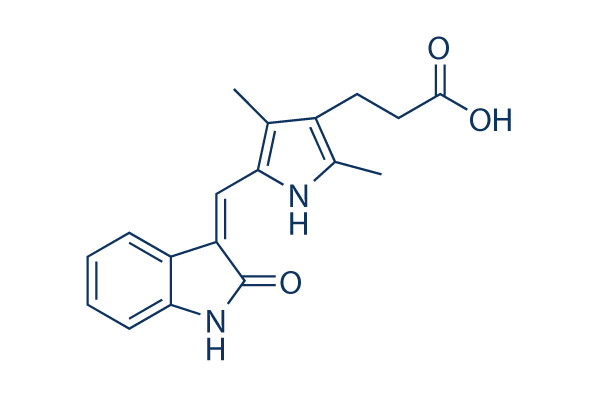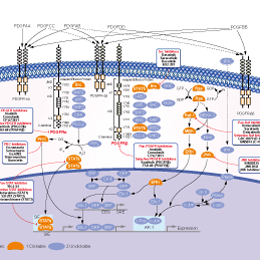
- Bioactive Compounds
- By Signaling Pathways
- PI3K/Akt/mTOR
- Epigenetics
- Methylation
- Immunology & Inflammation
- Protein Tyrosine Kinase
- Angiogenesis
- Apoptosis
- Autophagy
- ER stress & UPR
- JAK/STAT
- MAPK
- Cytoskeletal Signaling
- Cell Cycle
- TGF-beta/Smad
- DNA Damage/DNA Repair
- Compound Libraries
- Popular Compound Libraries
- Customize Library
- Clinical and FDA-approved Related
- Bioactive Compound Libraries
- Inhibitor Related
- Natural Product Related
- Metabolism Related
- Cell Death Related
- By Signaling Pathway
- By Disease
- Anti-infection and Antiviral Related
- Neuronal and Immunology Related
- Fragment and Covalent Related
- FDA-approved Drug Library
- FDA-approved & Passed Phase I Drug Library
- Preclinical/Clinical Compound Library
- Bioactive Compound Library-I
- Bioactive Compound Library-Ⅱ
- Kinase Inhibitor Library
- Express-Pick Library
- Natural Product Library
- Human Endogenous Metabolite Compound Library
- Alkaloid Compound LibraryNew
- Angiogenesis Related compound Library
- Anti-Aging Compound Library
- Anti-alzheimer Disease Compound Library
- Antibiotics compound Library
- Anti-cancer Compound Library
- Anti-cancer Compound Library-Ⅱ
- Anti-cancer Metabolism Compound Library
- Anti-Cardiovascular Disease Compound Library
- Anti-diabetic Compound Library
- Anti-infection Compound Library
- Antioxidant Compound Library
- Anti-parasitic Compound Library
- Antiviral Compound Library
- Apoptosis Compound Library
- Autophagy Compound Library
- Calcium Channel Blocker LibraryNew
- Cambridge Cancer Compound Library
- Carbohydrate Metabolism Compound LibraryNew
- Cell Cycle compound library
- CNS-Penetrant Compound Library
- Covalent Inhibitor Library
- Cytokine Inhibitor LibraryNew
- Cytoskeletal Signaling Pathway Compound Library
- DNA Damage/DNA Repair compound Library
- Drug-like Compound Library
- Endoplasmic Reticulum Stress Compound Library
- Epigenetics Compound Library
- Exosome Secretion Related Compound LibraryNew
- FDA-approved Anticancer Drug LibraryNew
- Ferroptosis Compound Library
- Flavonoid Compound Library
- Fragment Library
- Glutamine Metabolism Compound Library
- Glycolysis Compound Library
- GPCR Compound Library
- Gut Microbial Metabolite Library
- HIF-1 Signaling Pathway Compound Library
- Highly Selective Inhibitor Library
- Histone modification compound library
- HTS Library for Drug Discovery
- Human Hormone Related Compound LibraryNew
- Human Transcription Factor Compound LibraryNew
- Immunology/Inflammation Compound Library
- Inhibitor Library
- Ion Channel Ligand Library
- JAK/STAT compound library
- Lipid Metabolism Compound LibraryNew
- Macrocyclic Compound Library
- MAPK Inhibitor Library
- Medicine Food Homology Compound Library
- Metabolism Compound Library
- Methylation Compound Library
- Mouse Metabolite Compound LibraryNew
- Natural Organic Compound Library
- Neuronal Signaling Compound Library
- NF-κB Signaling Compound Library
- Nucleoside Analogue Library
- Obesity Compound Library
- Oxidative Stress Compound LibraryNew
- Plant Extract Library
- Phenotypic Screening Library
- PI3K/Akt Inhibitor Library
- Protease Inhibitor Library
- Protein-protein Interaction Inhibitor Library
- Pyroptosis Compound Library
- Small Molecule Immuno-Oncology Compound Library
- Mitochondria-Targeted Compound LibraryNew
- Stem Cell Differentiation Compound LibraryNew
- Stem Cell Signaling Compound Library
- Natural Phenol Compound LibraryNew
- Natural Terpenoid Compound LibraryNew
- TGF-beta/Smad compound library
- Traditional Chinese Medicine Library
- Tyrosine Kinase Inhibitor Library
- Ubiquitination Compound Library
-
Cherry Picking
You can personalize your library with chemicals from within Selleck's inventory. Build the right library for your research endeavors by choosing from compounds in all of our available libraries.
Please contact us at [email protected] to customize your library.
You could select:
- Antibodies
- Bioreagents
- qPCR
- 2x SYBR Green qPCR Master Mix
- 2x SYBR Green qPCR Master Mix(Low ROX)
- 2x SYBR Green qPCR Master Mix(High ROX)
- Protein Assay
- Protein A/G Magnetic Beads for IP
- Anti-Flag magnetic beads
- Anti-Flag Affinity Gel
- Anti-Myc magnetic beads
- Anti-HA magnetic beads
- Magnetic Separator
- Poly DYKDDDDK Tag Peptide lyophilized powder
- Protease Inhibitor Cocktail
- Protease Inhibitor Cocktail (EDTA-Free, 100X in DMSO)
- Phosphatase Inhibitor Cocktail (2 Tubes, 100X)
- Cell Biology
- Cell Counting Kit-8 (CCK-8)
- Animal Experiment
- Mouse Direct PCR Kit (For Genotyping)
- New Products
- Contact Us
Orantinib (SU6668)
Synonyms: TSU-68
Orantinib (TSU-68, SU6668) has greatest potency against PDGFR autophosphorylation with Ki of 8 nM in a cell-free assay, but also strongly inhibits Flk-1 and FGFR1 trans-phosphorylation, little activity against IGF-1R, Met, Src, Lck, Zap70, Abl and CDK2; does not inhibit EGFR. Phase 3.

Orantinib (SU6668) Chemical Structure
CAS No. 252916-29-3
Purity & Quality Control
Batch:
Purity:
99.73%
99.73
Orantinib (SU6668) Related Products
| Related Targets | PDGFRα PDGFRβ | Click to Expand |
|---|---|---|
| Related Products | Crenolanib CP-673451 Tyrphostin AG 1296 Trapidil PP121 AZD2932 | Click to Expand |
| Related Compound Libraries | Kinase Inhibitor Library Tyrosine Kinase Inhibitor Library PI3K/Akt Inhibitor Library Cell Cycle compound library Angiogenesis Related compound Library | Click to Expand |
Signaling Pathway
Biological Activity
| Description | Orantinib (TSU-68, SU6668) has greatest potency against PDGFR autophosphorylation with Ki of 8 nM in a cell-free assay, but also strongly inhibits Flk-1 and FGFR1 trans-phosphorylation, little activity against IGF-1R, Met, Src, Lck, Zap70, Abl and CDK2; does not inhibit EGFR. Phase 3. | ||
|---|---|---|---|
| Targets |
|
| In vitro | ||||
| In vitro | TSU-68 is a competitive inhibitor, with regard to ATP, to Flk-1/KDR trans-phosphorylation, FGFR1 trans-phosphorylation, and PDGFRβ kinases autophosphorylation. TSU-68 (0.03-10 μM) inhibits tyrosine phosphorylation of KDR in VEGF stimulated HUVECs. TSU-68 also inhibits PDGF-stimulated PDGFRβ tyrosine phosphorylation in NIH-3T3 cells overexpressing PDGFRβ at a minimum concentration of 0.03-0.1 μM. TSU-68 inhibits acidic FGF-induced phosphorylation of the FGFR1 substrate 2 at 10 μM and higher. However, TSU-68 (up to 100 μM) has no effect on EGF-stimulated EGFR tyrosine phosphorylation in NIH-3T3 cells overexpressing EGFR. TSU-68 inhibits VEGF-driven and FGF-driven mitogenesis of HUVECs with mean IC50 of 0.34 μM and 9.6 μM, respectively. [1] In human myeloid leukemia MO7E cells, TSU-68 inhibits the tyrosine autophosphorylation of stem cell factor (SCF) receptor, c-kit, with IC50 of 0.1-1 μM, as well as ERK1/2 phosphorylation, a signaling event downstream of c-kit activation. TSU-68 also inhibits SCF-induced proliferation of MO7E cells with IC50 of 0.29 μM, and induces apoptosis. [2] | |||
|---|---|---|---|---|
| Kinase Assay | trans-Phosphorylation Reactions | |||
| Tyrosine kinase assays to quantitate the trans-phosphorylation activity of Flk-1 and FGFR1 are performed in 96-well microtiter plates precoated (20 μg/well in PBS; incubated overnight at 4 °C) with the peptide substrate poly-Glu,Tyr (4:1). Excess protein binding sites are blocked with 1-5% (w/v) BSA in PBS. Purified GST-FGFR1 (kinase domain) or GST-Flk-1 (cytoplasmic domain) fusion proteins are then added to the microtiter wells in 2 × concentration kinase dilution buffer consisting of 100 mM HEPES, 50 mM NaCl, 40 μM NaVO4, and 0.02% (w/v) BSA. The final enzyme concentration for GST-Flk-1 and GST-FGFR1 is 50 ng/mL. SU6668 is dissolved in DMSO at 100× the final required concentration and diluted 1:25 in H2O. Twenty-five μL of diluted SU6668 are subsequently added to each reaction well. The kinase reaction is initiated by the addition of different concentrations of ATP in a solution of MnCl2 so that the final ATP concentrations spanned the Km for the enzyme, and the final concentration of MnCl2 is 10 mM. The plates are incubated for 5-15 min at room temperature before stopping the reaction with the addition of EDTA. The plates are then washed three times with TBST. Rabbit polyclonal antiphosphotyrosine antisera are added to the wells at a 1: 10000 dilution in TBST containing 0.5% (w/v) BSA, 0.025% (w/v) nonfat dry milk, and 100 μM NaVO4 and incubated for 1 hour at 37 °C. The plates are then washed three times with TBST, followed by the addition of goat anti-rabbit antisera conjugated with HRP. The plates are incubated for 1 hour at 37 °C and then washed three times with TBST. The amount of phosphotyrosine in each well is quantitated after the addition of 2,2 | ||||
| Cell Research | Cell lines | HUVECs, and NIH-3T3 cells overexpressing PDGFRβ or EGFR | ||
| Concentrations | 0.03-10 μM , dissolved in DMSO as 10 mM stock solution | |||
| Incubation Time | 1 hour (before ligand stimulation) | |||
| Method | Cells are seeded (3 × 105 cells/35-mm well) in DMEM containing 10% (v/v) FBS and grow to confluence and then quiesced in DMEM containing 0.1% serum for 2 hours before drug treatment. HUVECs (seeded at 2 × 106 cells/10-cm plate) are grown to confluence in endothelial cell growth media and then quiesced in endothelial cell basal media containing 0.5% FBS for 24 hours before drug treatment. All cell lines are incubated with SU6668 for 1 hour before ligand stimulation (100 ng/mL) for 10 min. Western blotting is perfor |
|||
| In Vivo | ||
| In vivo | TSU-68 (75-200 mg/kg) induces tumor growth inhibition against a broad range of tumor types in xenograft models in athymic mice, including A375, Colo205, H460, Calu-6, C6, SF763T, and SKOV3TP5 cells. TSU-68 (75 mg/kg) also suppresses tumor angiogenesis of C6 glioma xenografts. [1] In a tumor model of HT29 human colon carcinoma, TSU-68 (200 mg/kg) decreases the average vessel permeability and average fractional plasma volume in the tumor rim and core. TSU-68 promotes abnormal stromal development at the periphery of carcinomas. [3] In a rabbit VX2 liver tumor model, TSU-68 (200 mg/kg) augments the effect of chemotherapeutic infusion. [4] | |
|---|---|---|
| Animal Research | Animal Models | Mouse (Female, BALB/c, nu/nu) xenograft models of A375, Colo205, H460, Calu-6, C6, SF763T, and SKOV3TP5 tumor cells |
| Dosages | 75-200 mg/kg | |
| Administration | Via i.p. injection or oral gavage once daily. | |
Chemical Information & Solubility
| Molecular Weight | 310.35 | Formula | C18H18N2O3 |
| CAS No. | 252916-29-3 | SDF | Download Orantinib (SU6668) SDF |
| Smiles | CC1=C(NC(=C1CCC(=O)O)C)C=C2C3=CC=CC=C3NC2=O | ||
| Storage (From the date of receipt) | |||
|
In vitro |
DMSO : 62 mg/mL ( (199.77 mM) Moisture-absorbing DMSO reduces solubility. Please use fresh DMSO.) Water : Insoluble Ethanol : Insoluble |
Molecular Weight Calculator |
|
In vivo Add solvents to the product individually and in order. |
In vivo Formulation Calculator |
||||
Preparing Stock Solutions
Molarity Calculator
In vivo Formulation Calculator (Clear solution)
Step 1: Enter information below (Recommended: An additional animal making an allowance for loss during the experiment)
mg/kg
g
μL
Step 2: Enter the in vivo formulation (This is only the calculator, not formulation. Please contact us first if there is no in vivo formulation at the solubility Section.)
% DMSO
%
% Tween 80
% ddH2O
%DMSO
%
Calculation results:
Working concentration: mg/ml;
Method for preparing DMSO master liquid: mg drug pre-dissolved in μL DMSO ( Master liquid concentration mg/mL, Please contact us first if the concentration exceeds the DMSO solubility of the batch of drug. )
Method for preparing in vivo formulation: Take μL DMSO master liquid, next addμL PEG300, mix and clarify, next addμL Tween 80, mix and clarify, next add μL ddH2O, mix and clarify.
Method for preparing in vivo formulation: Take μL DMSO master liquid, next add μL Corn oil, mix and clarify.
Note: 1. Please make sure the liquid is clear before adding the next solvent.
2. Be sure to add the solvent(s) in order. You must ensure that the solution obtained, in the previous addition, is a clear solution before proceeding to add the next solvent. Physical methods such
as vortex, ultrasound or hot water bath can be used to aid dissolving.
Tech Support
Answers to questions you may have can be found in the inhibitor handling instructions. Topics include how to prepare stock solutions, how to store inhibitors, and issues that need special attention for cell-based assays and animal experiments.
Tel: +1-832-582-8158 Ext:3
If you have any other enquiries, please leave a message.
* Indicates a Required Field
Tags: buy Orantinib (SU6668) | Orantinib (SU6668) supplier | purchase Orantinib (SU6668) | Orantinib (SU6668) cost | Orantinib (SU6668) manufacturer | order Orantinib (SU6668) | Orantinib (SU6668) distributor







































